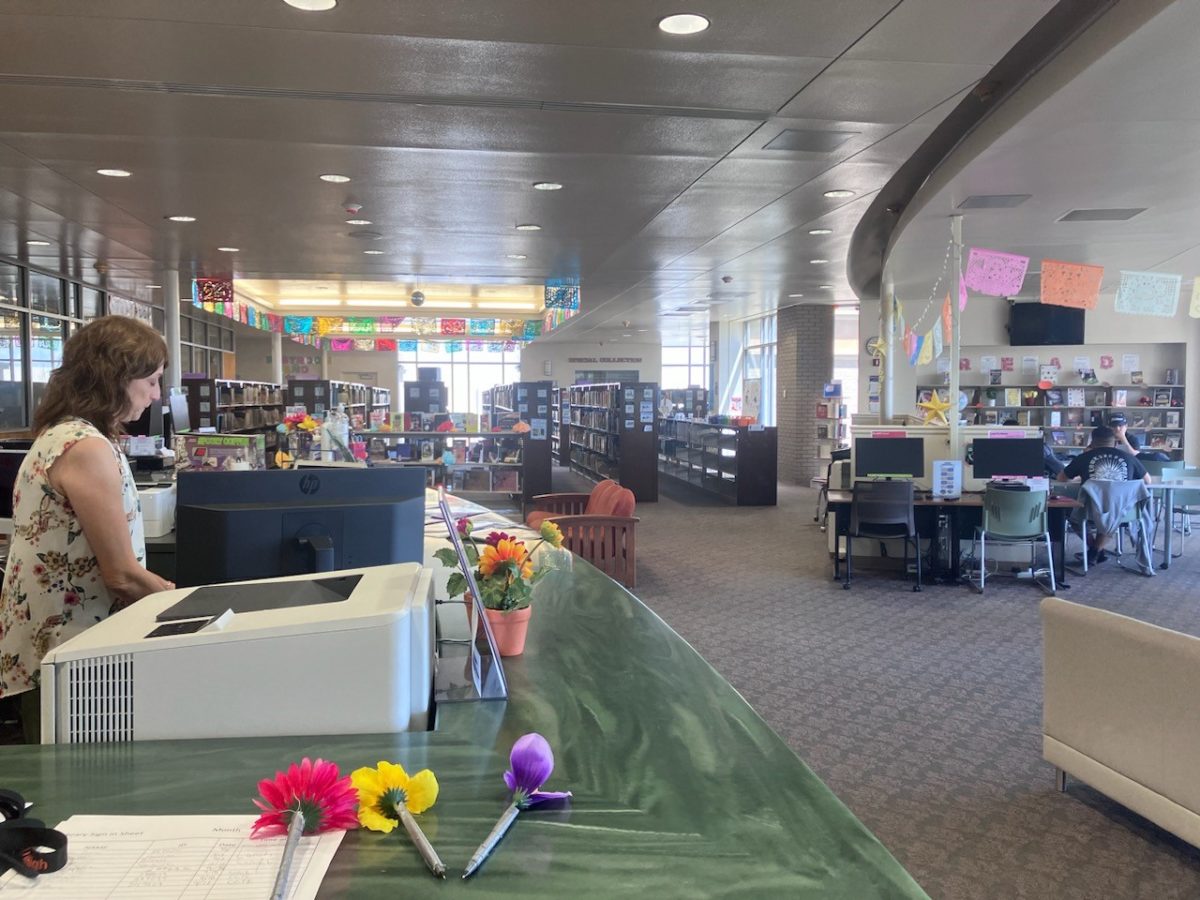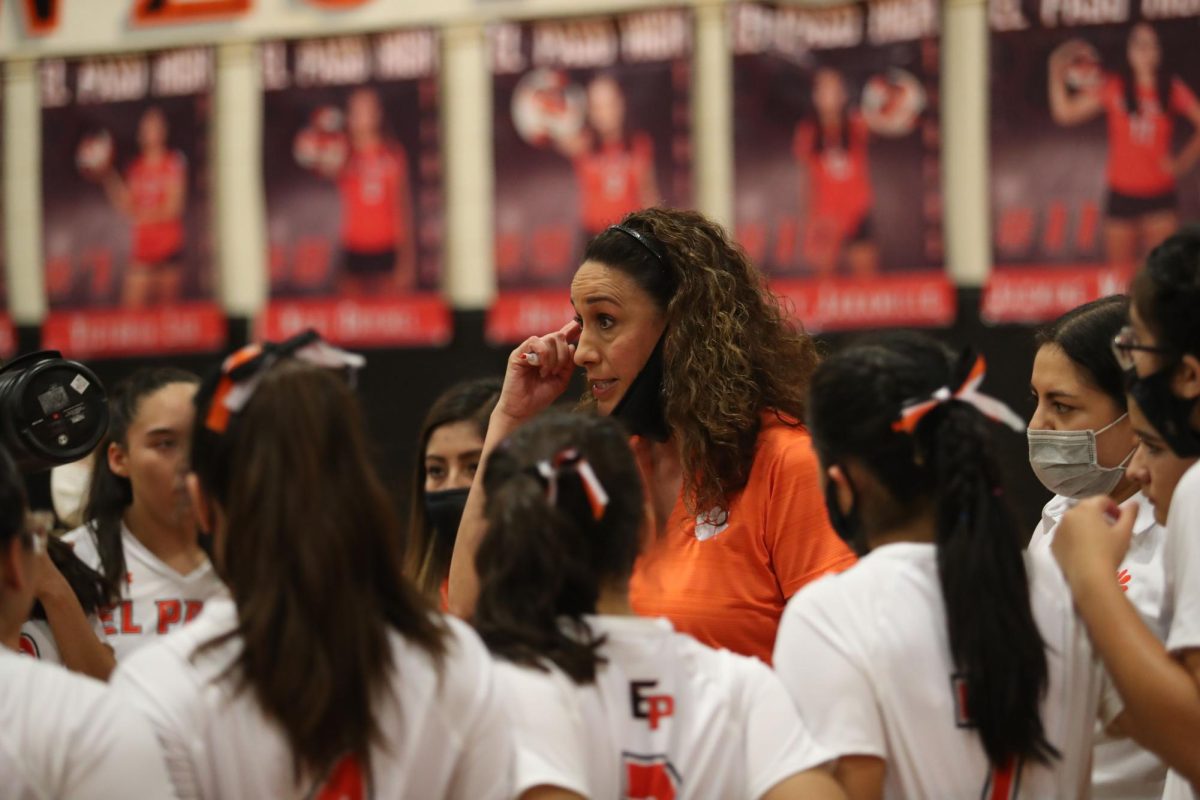During the Summer of 2023, Asbestos had been detected in the flooring of the fourth-floor Science wing which would result in the displacement of teachers and students from their classrooms to outdoor portables this fall.
Teachers of El Paso High School were delivered news that would alter the direction of their teaching for the school year that followed.
“The project at El Paso is a large-scale renovation,” Micheal Fernandez, project manager of the Maintenance, Buildings, and Grounds department in EPISD, said.
As students roll into the new school year, the news of a health hazard hiding beneath them raises many questions. Without the resources needed to carry out experiments and labs, how will Science teachers adapt to this change? And will students learn as well as they can in a new environment?
“I am freaking out,” El Paso High Chemistry teacher, Nadia Reese said. “I am stressing out because I am very hands-on with the experiments that we do. We learn concepts, and then we practice what we learned through experimentation, and it is just going to be so difficult for us to do what we normally do without the use of gas and water.”
Adapting to a change of this magnitude comes with the need for innovation. Mrs. Reese mentions how she and fellow Chemistry teacher Bruce De La Paz have been trying to find solutions for the lack of proper equipment in outdoor portables. Performing experiments with limited resources is a challenging feat.
“There is none of the things that we need in order to perform an experiment,” Mrs. Reese said. “However, we could perform some experiments that don’t require gas.”
“We could still do chemical reactions,” she added, however, these experiments would be minimal due to the lack of safety equipment, chemical-resistant lab tables, and the additional cleanup necessary to conduct safe labs.
Mrs. Reese added that cleanup and maintenance during labs would be difficult for her and colleagues.
“We’ve been thinking about buying blow torches so that we can use those as Bunsen burners, and he’s purchased some carts and these tanks we’re working to fill with water,” Mrs. Reese said. “It’s just going to require a lot more planning and patience and flexibility.”
However, ultimately, the relocation of classes will be both beneficial to faculty and alumni. Asbestos fibers have the potential to cause lung cancer, asbestosis and mesothelioma; all diseases that cause severe damage to the respiratory system.
“Sometimes you just have to put your best foot forward and have a little bit of creativity to work around a bad situation…I guess just pivot, readjust, and pivot, and don’t let it overwhelm you,” Mrs. Reese said.
The move from classrooms to portables is not only affecting teachers but has an impact on the students they teach as well. Concerns have risen about what educational opportunities may remain intact despite this shift.
“I’d rather just be in the classroom and have fun dissecting a cow, you know?” junior Sofia Gilbert said.
By the first week of school, El Paso High School Juniors Uriah Ramirez and Sofia Gilbert, enrolled in Anatomy and Physiology located on the fourth floor, were informed about the renovations and subsequent displacement of classrooms by their teacher.
“She informed us that we would have to move classrooms, so half of the labs that we were going to do for anatomy would be canceled,” said Sofia.
“I feel like it’s gonna decrease our labs and activities that we usually do, and those usually helped me learn a lot,” says Uriah. “I feel like it’s gonna be really tough considering that we have a big class too. So the space is just going to be really quite tight and super crowded.”
However, what does the removal process consist of? As the date for renovations approaches, it is crucial to understand what is happening behind the scenes.
EPISD operates under strict adherence to the Environmental Protection Agency’s (EPA) Asbestos Hazard Emergency Response Act (AHERA), a program that requires school districts to survey campuses and sample building materials for asbestos, as well as provide specific safety guidelines that contractors and consultants must follow when working with the toxic substance.
The asbestos program has been in place since 1988, according to Micheal Fernandez, the project manager with the Maintenance, Buildings, and Grounds Department in EPISD.
“It’s very costly and very difficult to time things without too much interruption to the classes and the teaching staff,” Fernandez said. “The material that we’re going to be removing there is the flooring, which is the old floor tile, as well as the adhesive. And we’ll be getting that out of there so the general contractor can renovate and replace the flooring with new material.”
Contractors will break the process into three phases from September through March or May next year. “It just depends,” Fernandez said.
Teachers have begun to be moved from their classrooms to portables starting Monday, Sept. 18 according to Mrs. Reese, however, the actual removal of asbestos was said to “take place in October,” Fernandez said.
“You’ll have a clean work and student learning environment,” Fernandez said. “Once we get rid of the material that’s on the fourth floor, that should be it…we won’t have anything to worry about in the future.”













